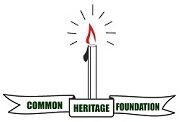Identification of communities with people that could benefit from adenolymphangitis (ADL) and lymphoedema morbidity management within Lymphatic Filariasis Elimination Programmes (NLFEP) in many African countries is a major challenge to programme managers.
Another challenge is advocating for proportionate allocation of funds to alleviating the suffering that afflicted people bear. In this study we developed a rapid qualitative technique of identifying communities where morbidity management programme could be situated and documenting the pain and distress that afflicted persons endure. Estimates given by health personnel and by community resource persons were compared with systematic household surveys for the number of persons with lymphoedema of the lower limb.
Communities in Northeastern Nigeria, with the largest number of lymphoedema cases were selected and a study of local knowledge, physical, psychosocial burden and intervention-seeking activities associated with the disease documented using an array of techniques (including household surveys, key informant interviews, group discussions and informal conversations).
Health personnel gave a more accurate estimate of the number of lymphoedema patients in their communities than either the community leader or the community directed ivermectin distributor (CDD). Community members with lymphoedema preferred to confide in health personnel from other communities. The people had a well developed local vocabulary for lymphoedema and are well aware of the indigenous transmission theories.
Although the people associated the episodic ADL attacks with the rains which were more frequent at that period they did not associate the episodes with gross lymphoedema. There were diverse theories about lymphoedema causation with heredity, accidental stepping on charmed objects and organisms, breaking taboos. The most popular belief about causation, however, is witchcraft (60.9%). The episodic attacks are dreaded by the afflicted, since they are accompanied by severe pain (18%).
The emotional trauma included rejection (27.5%) by family, friends and other community members to the extent that divorce and isolation are common. Holistic approach to lymphoedema morbidity management should necessarily be an integral component of the ongoing transmission elimination programme. Any transmission prevention effort that ignores the physical and psychological pain and distress that those already afflicted suffer is unethical and should not be promoted.
Partner/Funder: World Health Organisation
Source: Acta Trop. 2011 Sep:120 Suppl 1:S62-8. doi: 10.1016/j.actatropica.2011.03.008. Epub 2011 Apr 4
